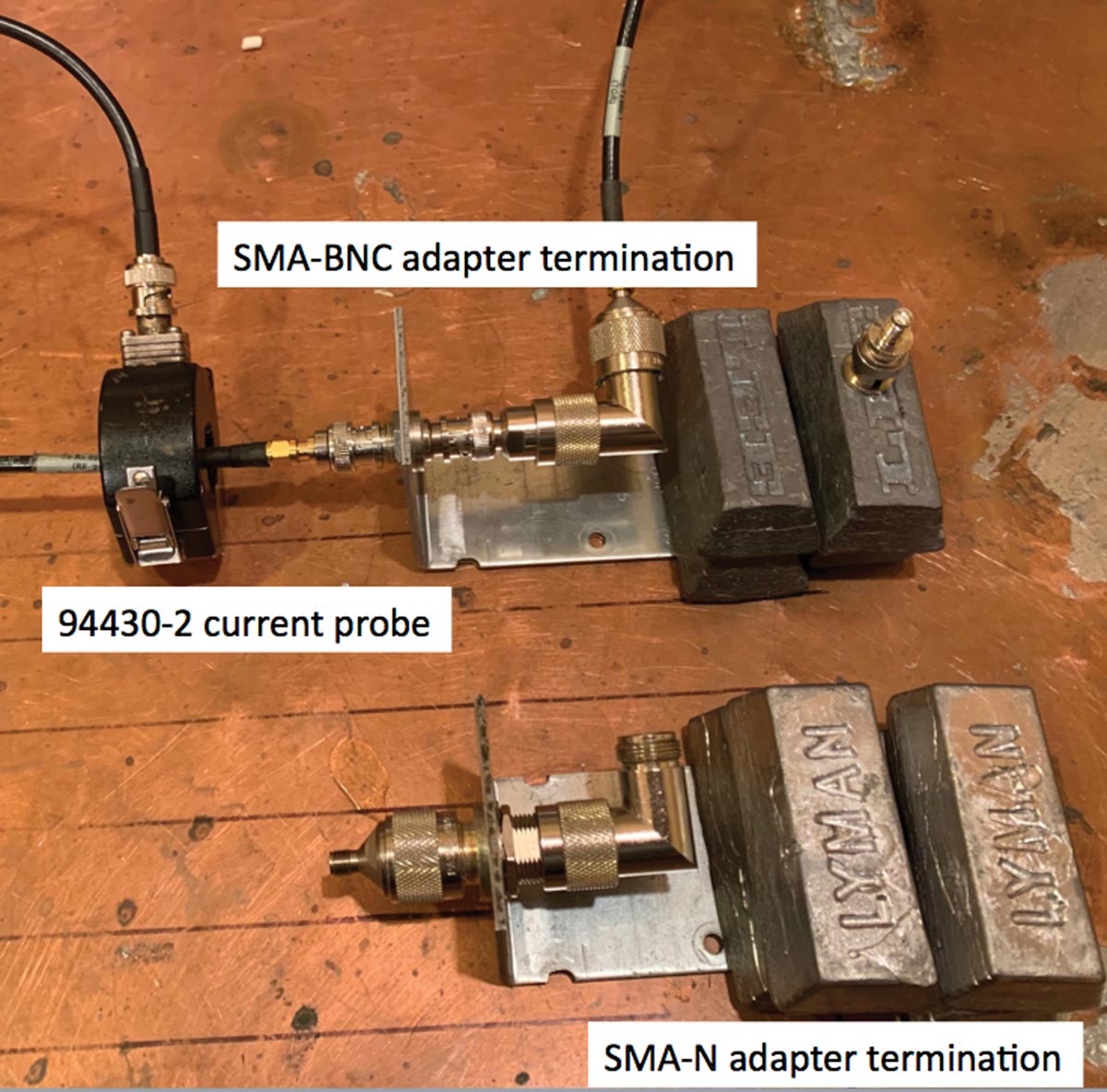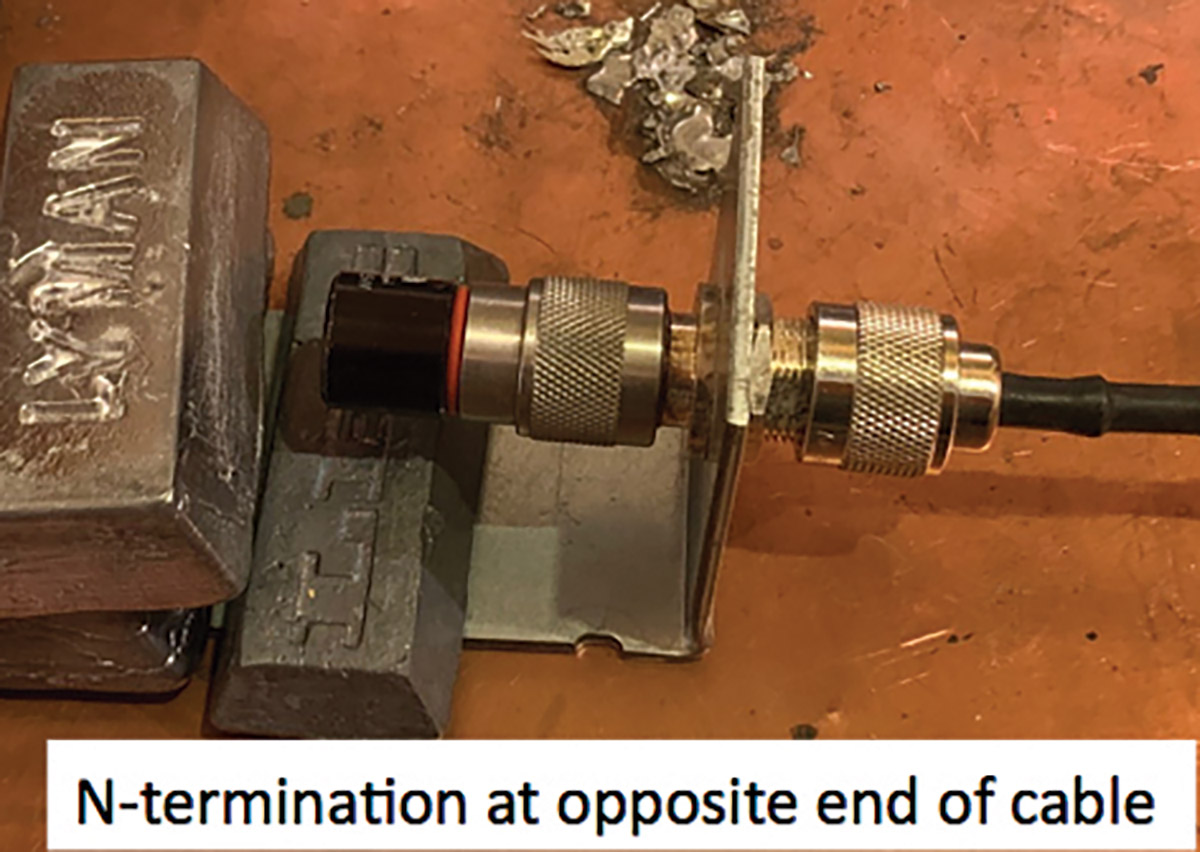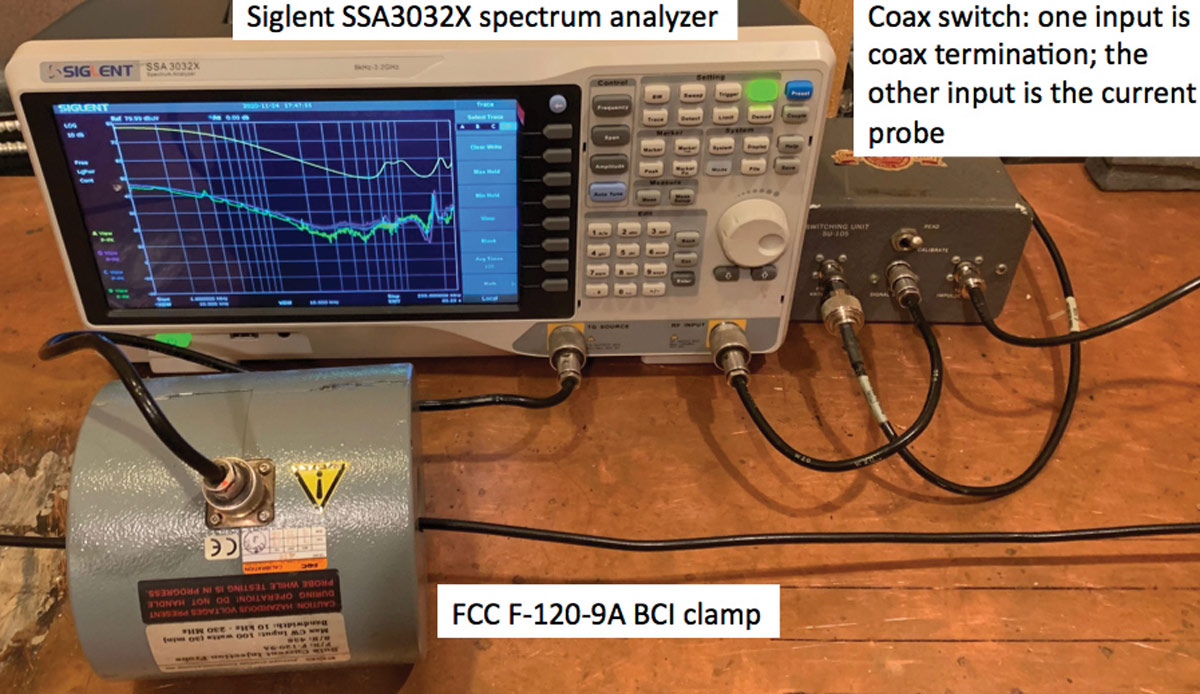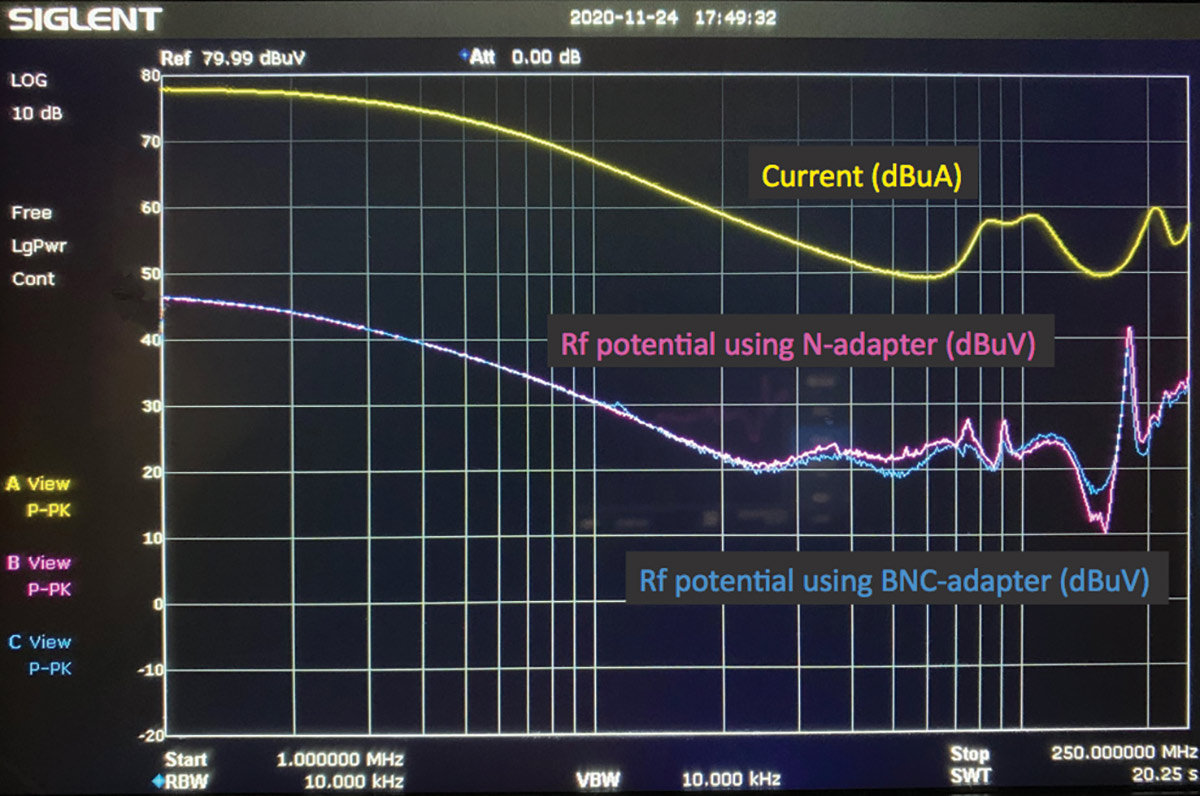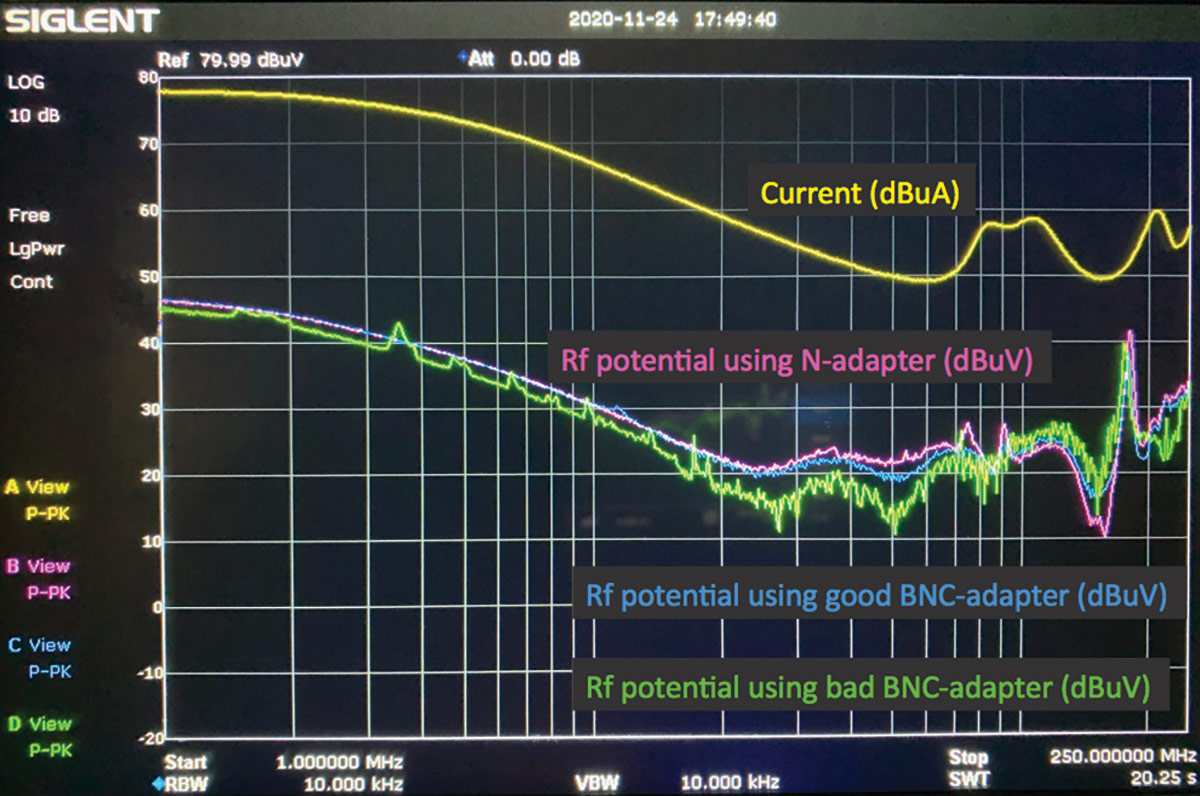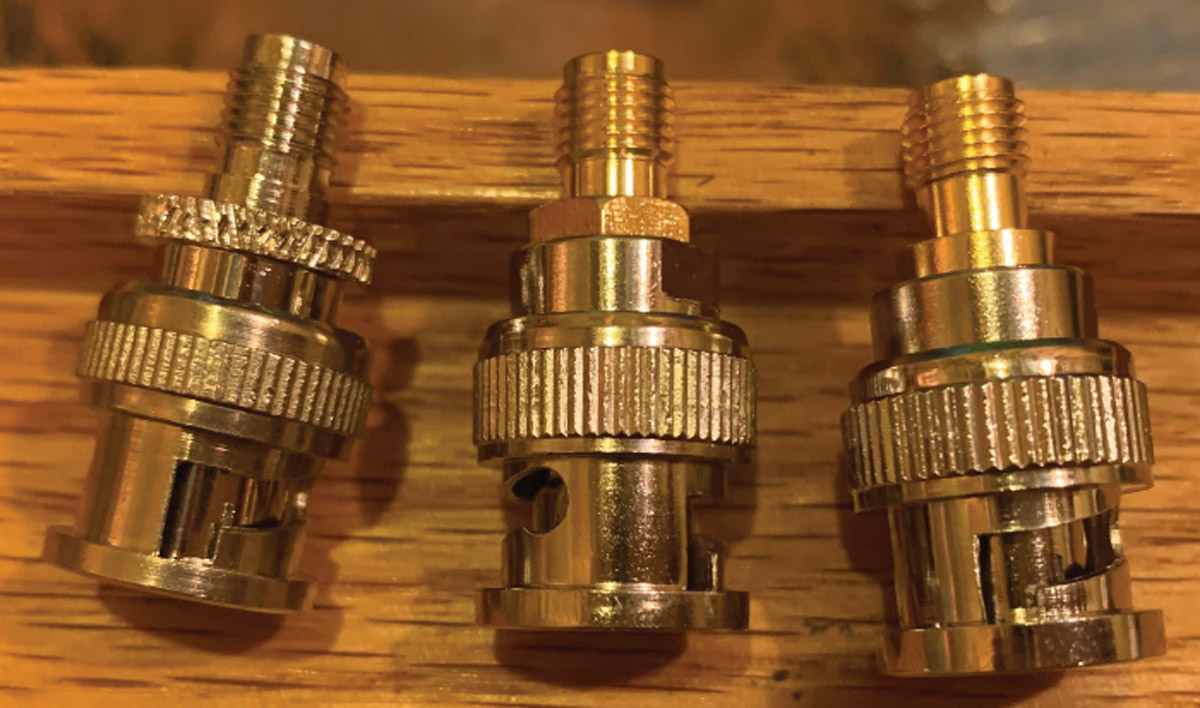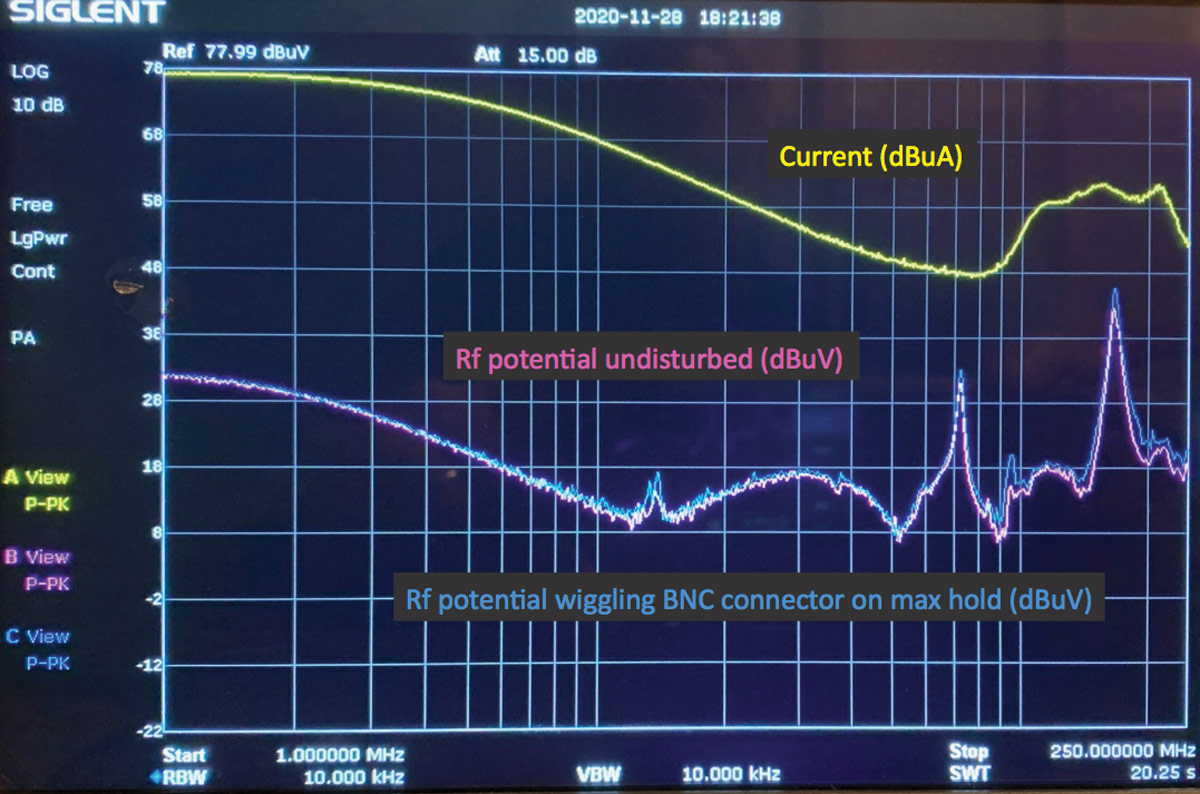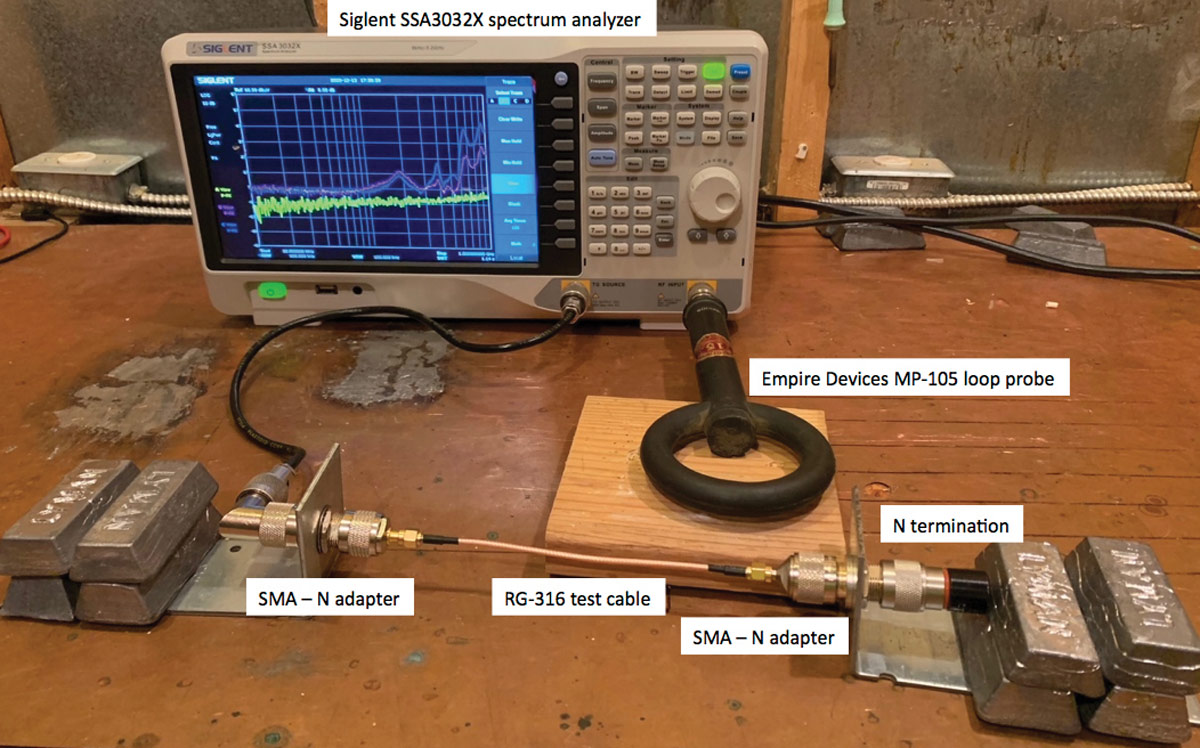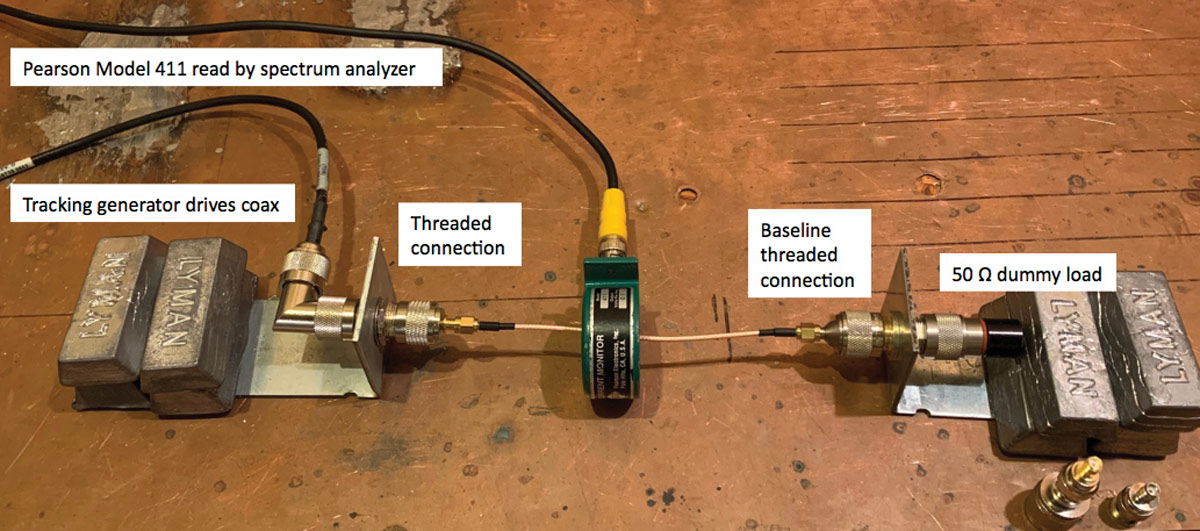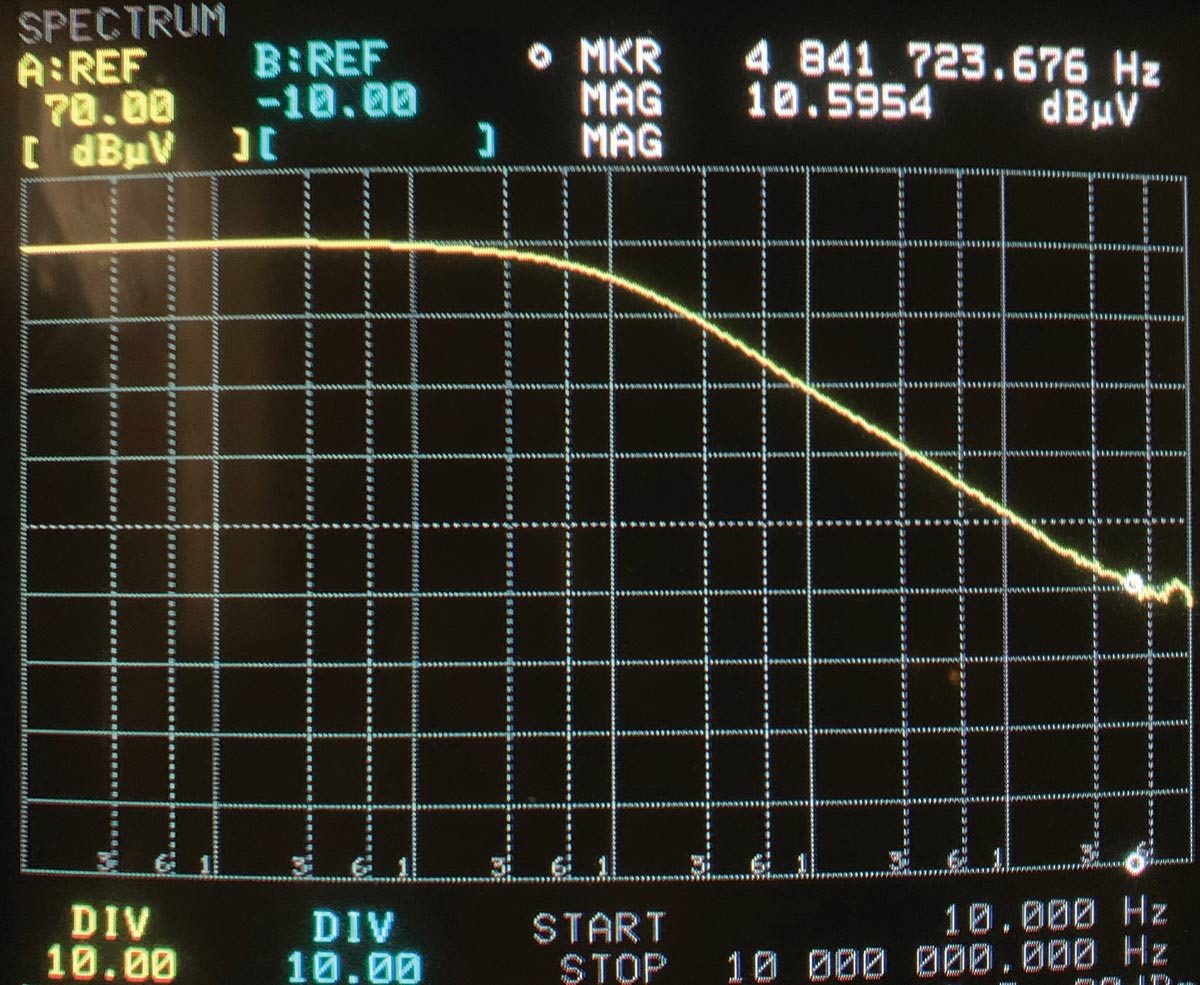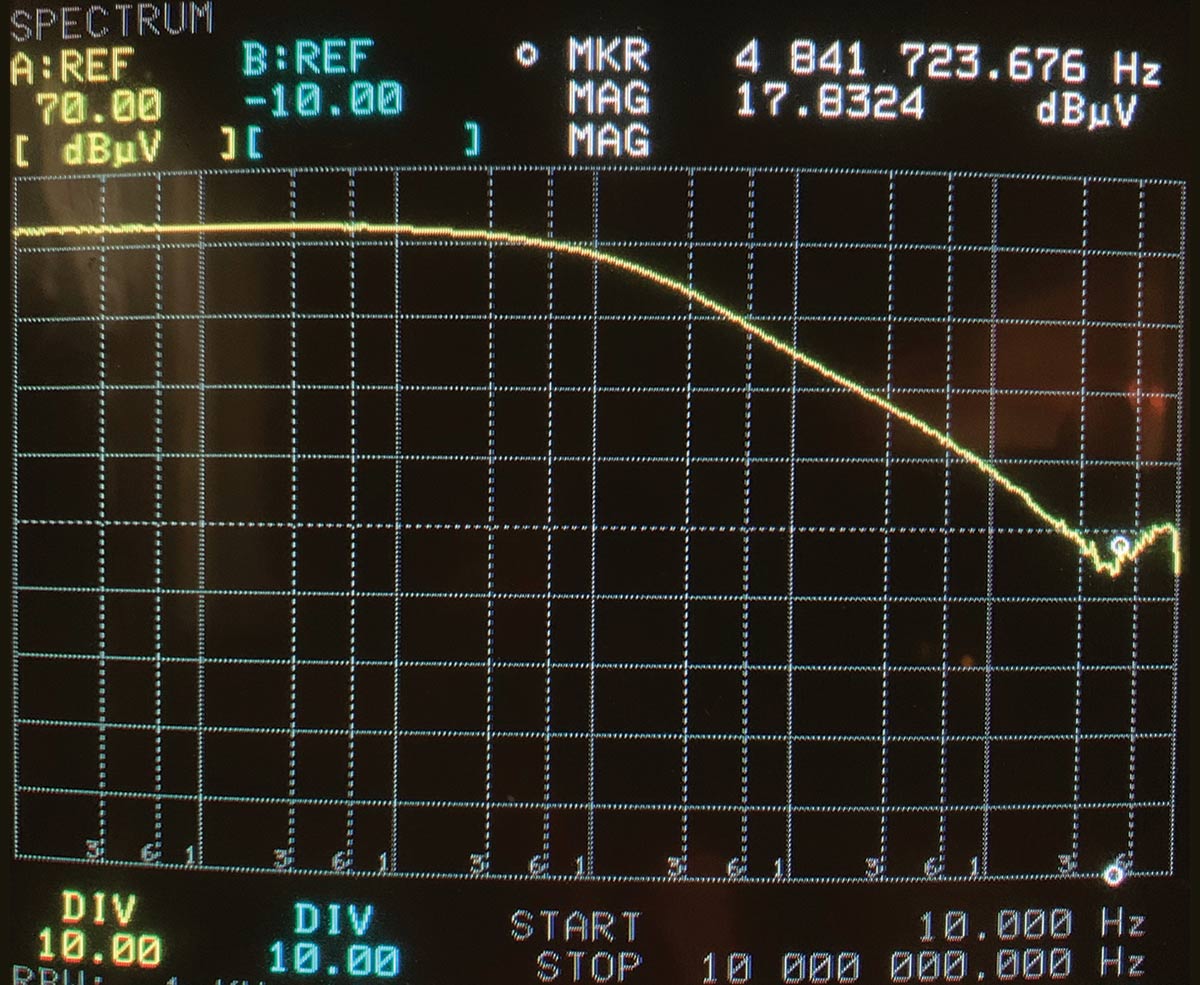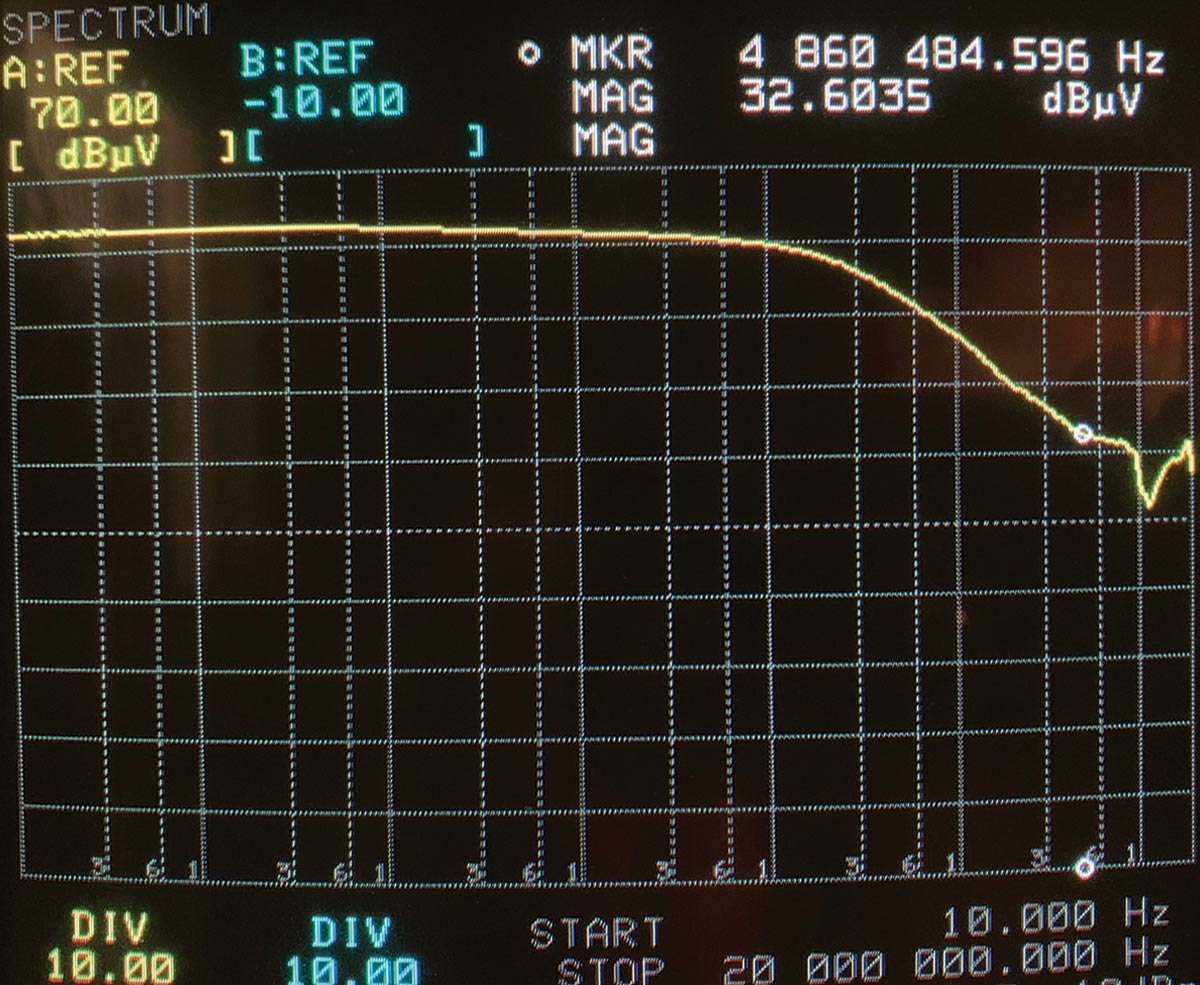BNC Versus Threaded Connectors
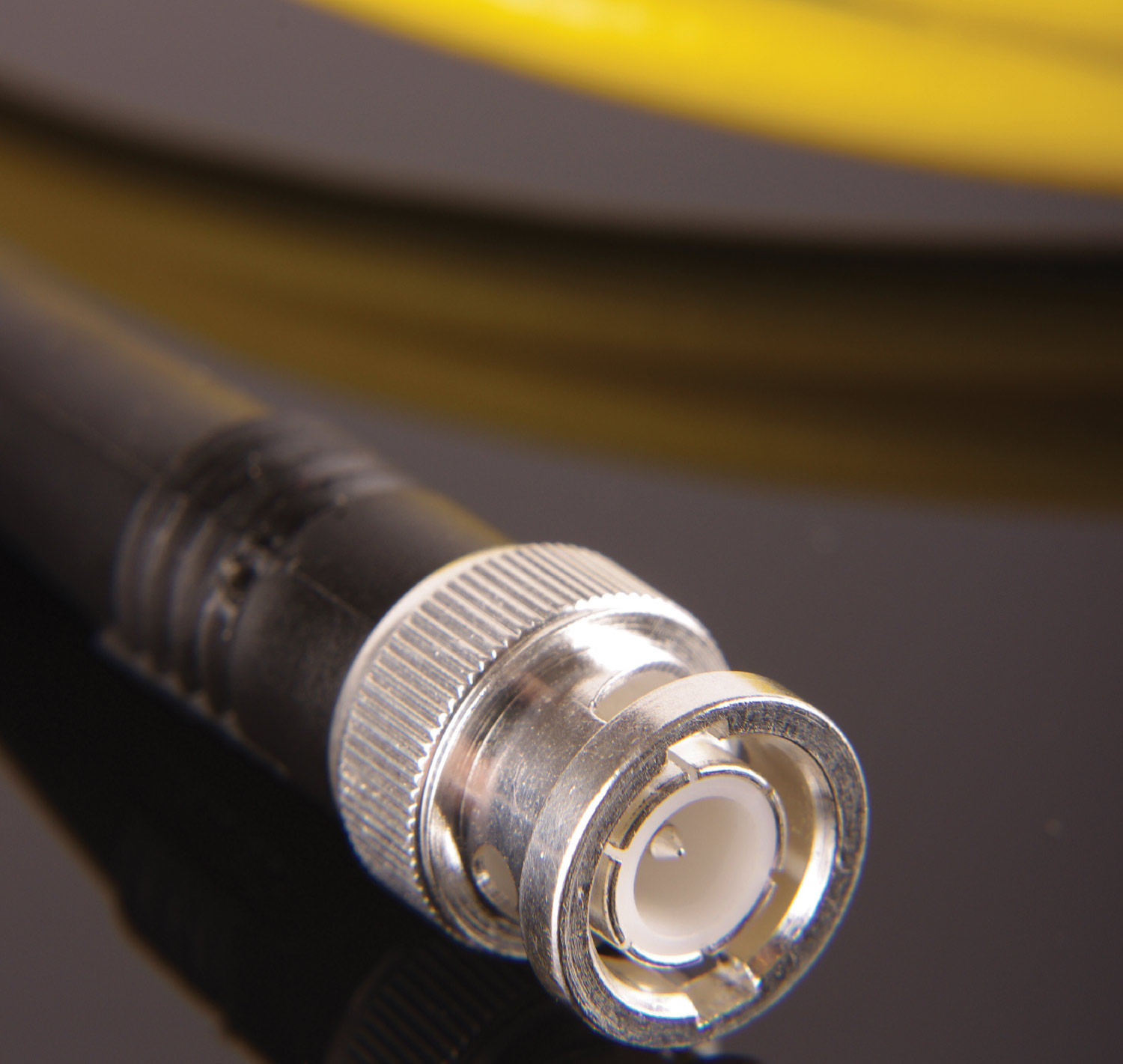
rule-of-thumb in EMC and RF (hereinafter termed “The Rule”) is that bayonet connectors (BNCs) leak above 10 MHz and are thus to be avoided for radiated measurements. Threaded connectors such as TNC, N, and SMA are used for radiated test work. Having said that, to this day my test facility has some old biconicals and rod antennas with BNC connectors. What’s going on?
On one hand, there is The Rule. On the other hand, it doesn’t seem likely that the manufacturers of otherwise fine test equipment would use a leaky connector.
A measurement of connector leakage performance – BNC vs. threaded – is revealing.
One might imagine a connector leakage test to look like Figure 1, where a signal is piped through a length of coaxial cable, and the radiation due to that signal is measured externally.
A measurement like that shown in Figure 1 will indeed verify The Rule. But that isn’t the actual problem when the BNC connector is on an antenna. The issue there is transfer impedance because the potential problem with a leaky connector is that the same field that impinges on the antenna will also impinge on the coaxial connection to the receiver. And if the induced external cable current gets inside the coaxial transmission line, it will corrupt the radiated measurement. And it turns out that certainly in the rod and biconical antenna ranges a BNC connector is suitable for this application and doesn’t leak much more than a threaded connector as long as it isn’t defective.
The balance of this Tech Tip presents data substantiating the preceding statements. And as a fringe benefit, we find that BNC connectors can make serviceable connector savers for smaller diameter cables terminated in fragile SMA connectors.1
The optimal way to achieve that is to use the same exact cable, and change connectors. This is achievable with a cable using a threaded connector such as SMA, and then adapting to other threaded and bayonet connectors, as was done in this investigation.
Figures 2a, 2b, 2c, and 2d show the measurement. LMR-195 50 Ω coaxial cable with an N connector at one end and SMA at the other has its termination bonded to a ground plane at each end. A bulk cable injection (BCI) clamp induces an RF potential on the cable shield, and a current probe monitors the resultant current at the connector of interest. Both current and the induced potential between coaxial center conductor and ground are displayed on a spectrum analyzer (Figures 3 and 5). Voltage and current may be compared to assess transfer impedance. For this investigation, transfer impedance nominal value is not of great interest; it is the change when swapping out a threaded (N) for a bayonet (BNC) connector, or the effect of wiggling a connector, that is of primary interest.
Figures 7a and 7b require some explanation. For the purpose of this demonstration, the idea is that if the connectors don’t leak at all there should be no common-mode current, that is, the center conductor and shield current are equal and opposite, and net flux picked by the current probe is nil. This is only true at higher frequencies where the shield path is a more attractive path than the ground plane beneath it, as explained by Henry Ott in his seminal 1976 book, Noise Reduction Techniques in Electronic Systems,2 and demonstrated practically annually at EMC Symposia.
However, when the coaxial cable is not part of the measurement system but part of the radiating system instead (and we wish to minimize radiation that could be picked up by the measurement system), then just like the old rule says: above 10 MHz, threaded connectors are the order of the day.
- The concept of a connector-saver is extremely valuable for very high cost, low loss cable used at microwave and millimeter frequencies. There the connector saver will be a female-to-male SMA adapter, but the important point is that if you break or wear out the adapter, the original high $$$ cable is still intact. But given the fragility of SMA connectors used in a test environment, connector savers are a good idea for even everyday cable types such as LMR-195, or RG-58. Even though the dollar value associated with the cable is low, if it is part of a measurement system with calibrated loss values read into measurement software files, it is worth preserving that piece of cable.
- Henry Ott, Noise Reduction Techniques in Electronic Systems, 1976, Wiley-Interscience.
- The low frequency plateau is easily quantified: 15 dBm source (122 dBuV) across 50 Ω load
at end of coaxial cable causes a current of 122 dBuV – 34 dBΩ = 88 dBuA. We read that with the Pearson Model 411 current probe with -26 dBΩ transfer impedance from 1 Hz to 20 MHz (+/-3 dB), arriving at a reading of 88 dBuA + -26 dBΩ = 62 dBuV.



